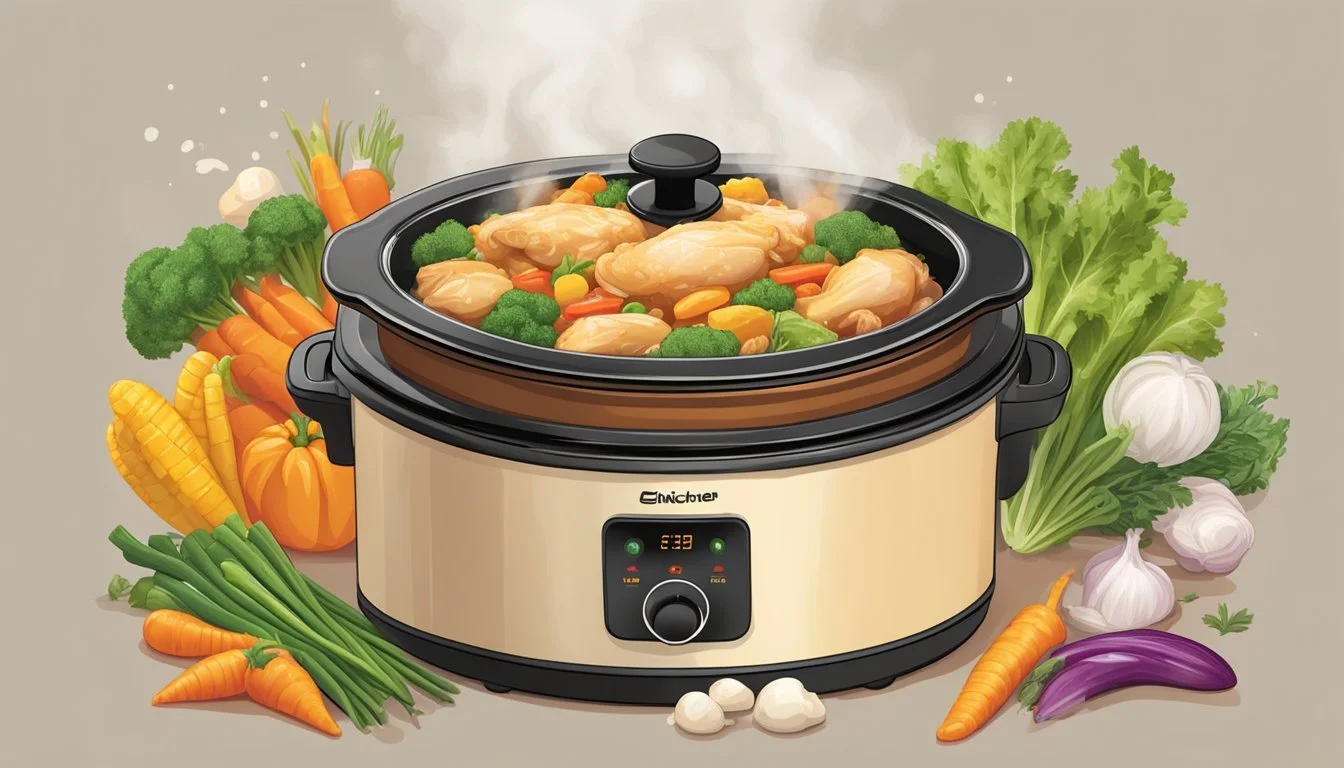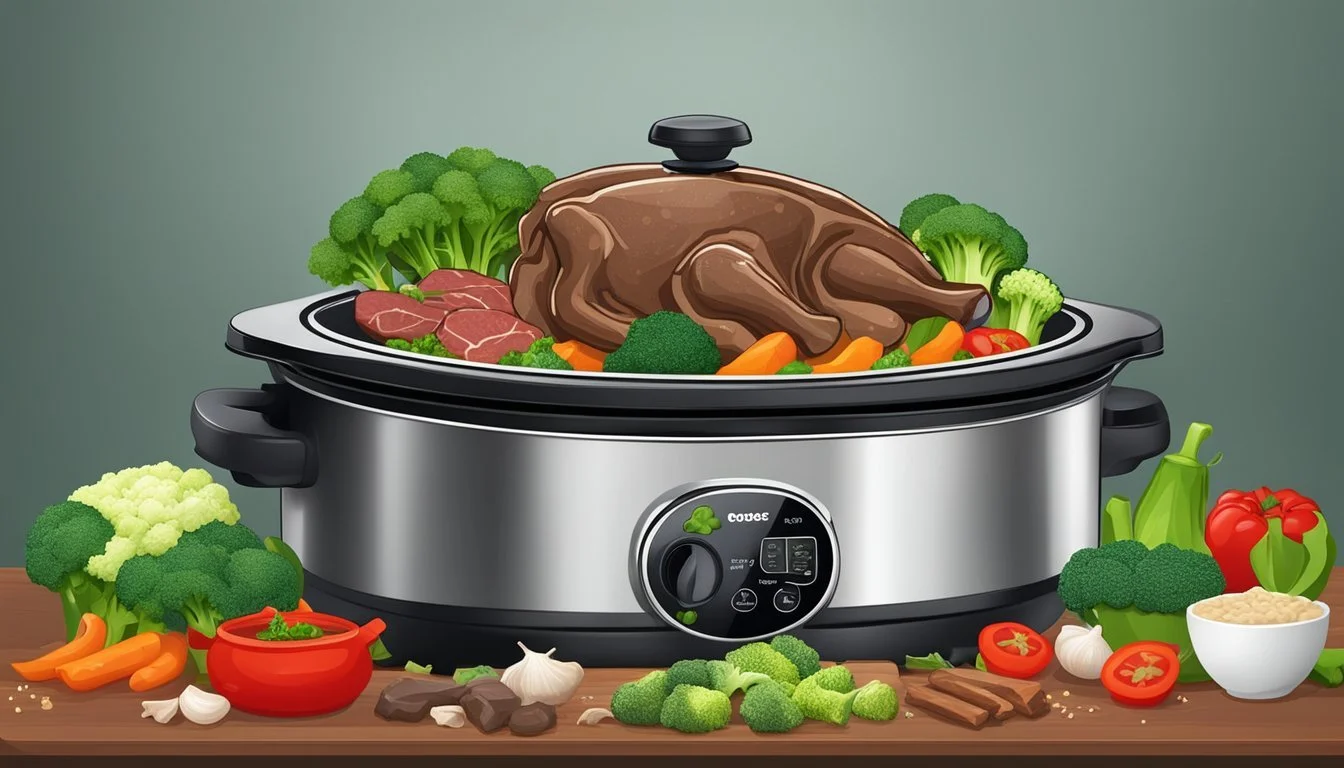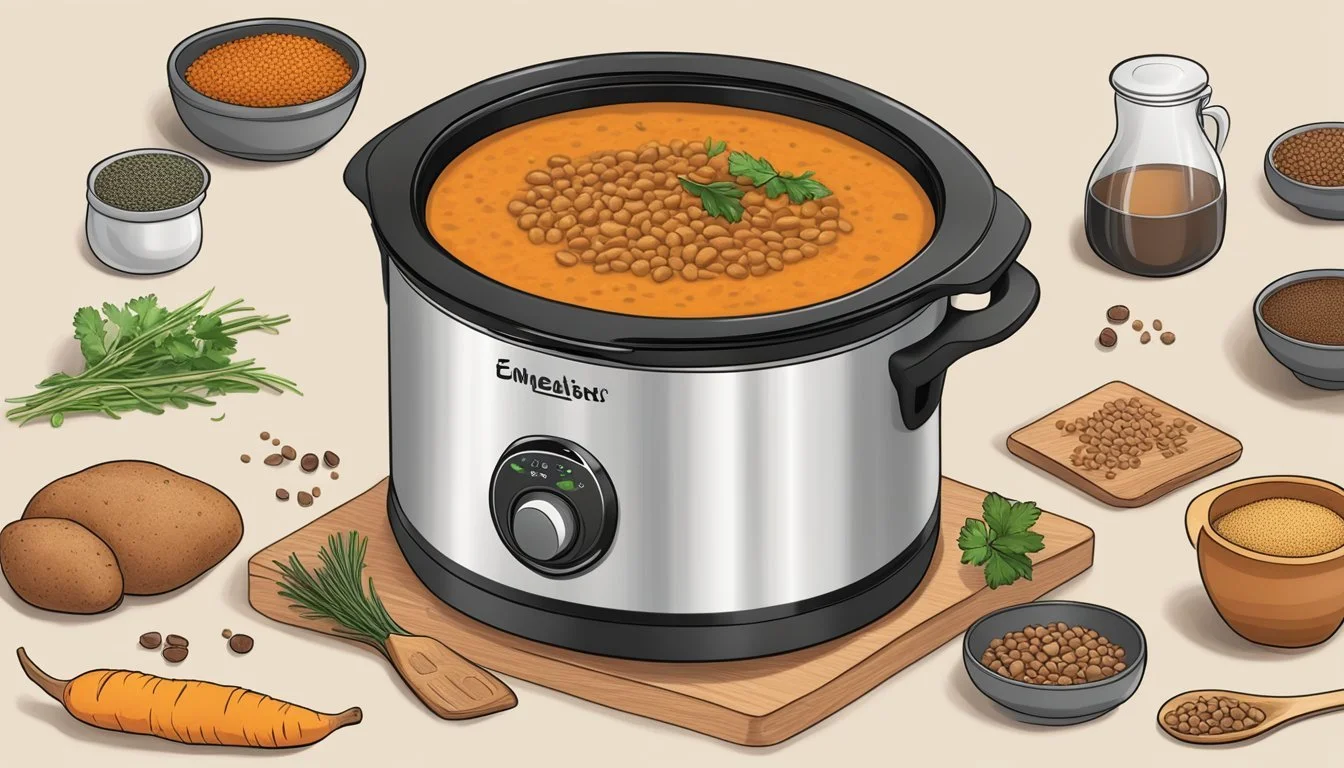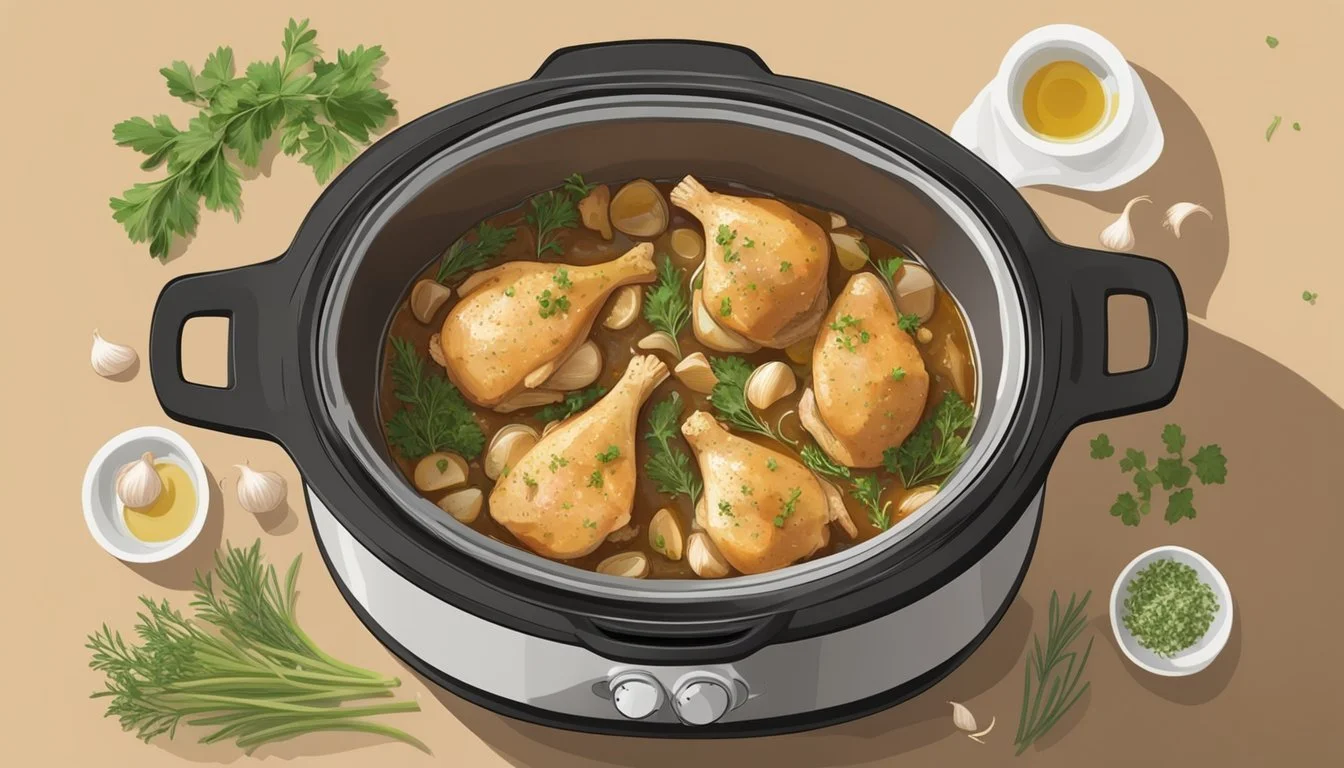8 Diabetes-Friendly Slow Cooker Recipes for Healthier Living
Managing diabetes often requires careful meal planning, especially when it comes to maintaining balanced blood sugar levels. For those who appreciate convenience in the kitchen, slow cooker recipes offer a practical and tasty solution.
Incorporating diabetes-friendly slow cooker recipes can make daily meal preparation both effortless and nutritious. These recipes focus on ingredients that support stable blood sugar levels, such as whole grains, lean proteins, and healthy fats, ensuring that every meal is as health-conscious as it is delicious.
1) Hearty Chicken and Vegetable Stew
Hearty Chicken and Vegetable Stew is an excellent choice for a diabetes-friendly meal. The dish combines lean chicken breasts with a variety of vegetables, providing a balanced mix of protein, fiber, and essential nutrients.
Start by chopping carrots, celery, onions, and bell peppers. These vegetables add vibrant color and essential vitamins to the stew.
Place the chicken and vegetables in the slow cooker. Add low-sodium chicken broth to keep the dish heart-healthy and suitable for a diabetic diet.
Include seasonings like garlic, thyme, and rosemary. These herbs enhance the flavor without adding unnecessary sugars or fats.
Cook on low heat for 6-8 hours. The slow cooking process ensures the chicken becomes tender and the vegetables absorb all the flavors.
For added fiber, consider adding whole-grain barley or quinoa. These ingredients help maintain stable blood sugar levels.
Serve the stew hot. It pairs well with a side of whole grain bread for a complete meal. Enjoy the savory, comforting flavors while supporting healthy eating habits.
2) Beef and Broccoli Delight
Beef and Broccoli Delight offers the perfect combination of savory flavors and healthy ingredients. This diabetes-friendly recipe uses lean cuts of beef and fresh broccoli to provide essential nutrients without unnecessary carbs or sugars.
The preparation begins by placing the beef in the slow cooker. A mixture of beef broth, soy sauce, oyster sauce, honey, rice vinegar, chili-garlic paste, and garlic is poured over the beef, ensuring a rich, flavorful base.
Cooking the mixture on low for about 1.5 to 3 hours allows the beef to become tender. A thickening agent like xanthan gum or glucomannon can be added to enhance the sauce's texture before stirring in broccoli florets for the last 30 minutes.
This dish can be served over brown rice or whole-grain noodles to keep it diabetes-friendly. The combination of protein from the beef and fiber from the broccoli helps stabilize blood sugar levels.
With minimal prep and a simple cooking process, Beef and Broccoli Delight makes for an easy, healthy meal option that fits perfectly into a diabetes-conscious diet.
3) Spiced Lentil and Sweet Potato Soup
Spiced Lentil and Sweet Potato Soup is a comforting and hearty dish perfect for anyone looking to maintain balanced blood sugar levels. This recipe combines lentils, a great source of protein and fiber, with sweet potatoes, which add natural sweetness without spiking blood sugar.
In a slow cooker, lentils are simmered alongside sweet potatoes, carrots, and celery. The mixture is seasoned with garlic and garam masala, delivering a warm and aromatic flavor profile.
These simple ingredients are easy to prepare. Rinsed and drained lentils, chopped sweet potatoes, and other vegetables go into the slow cooker, which is then set on low heat for 8 to 9 hours or high heat for 4 to 4 1/2 hours.
Adding broth ensures a rich and smooth texture. Garnishing with a bit of butter or olive oil enhances the flavor, making the soup even more satisfying.
Removing any optional ingredients like parmesan rind before serving can cater to dietary preferences. This adaptable recipe provides a nutritious and diabetes-friendly meal that can be enjoyed by all.
4) Slow Cooker Chili with Turkey
Slow Cooker Chili with Turkey offers a flavorful and nutritious option for those managing diabetes. Using lean ground turkey helps reduce the fat content compared to traditional beef chili, making it a lighter yet satisfying meal.
To prepare this dish, brown the ground turkey in a skillet before transferring it to the slow cooker. This step enhances the taste and texture of the meat.
Next, add onions, bell peppers, and minced garlic to the slow cooker. These vegetables provide essential nutrients and a pleasant aromatic base for the chili.
Include canned diced tomatoes, tomato sauce, and kidney beans for a rich, hearty texture. These canned items simplify preparation while maintaining the dish's nutritional value.
Season the mixture with chili powder, cumin, salt, and pepper. These spices bring warmth and depth to the chili, ensuring a balanced and enjoyable flavor.
For a bit of heat, consider adding chopped jalapeños. If you prefer a milder dish, simply reduce the amount or omit them altogether.
Cook the chili on low for 6-8 hours or on high for 4-5 hours. This slow cooking process allows the flavors to meld together beautifully, resulting in a comforting and delicious meal.
5) Garlic and Herb Chicken Thighs
Garlic and Herb Chicken Thighs offer a flavorful and nutritious option for those managing diabetes.
To prepare, start by melting butter in a skillet and browning the chicken thighs. This adds a rich, savory depth to the dish.
Once browned, place the chicken thighs in a slow cooker. The inclusion of garlic and herb seasoning enhances the taste, making it both aromatic and delicious.
Cooking at a low temperature allows the flavors to meld together, resulting in tender, succulent chicken.
This dish can be paired with a variety of side options, such as steamed vegetables or a simple salad, to keep the meal balanced and diabetes-friendly.
6) Cinnamon Apple Oatmeal
Cinnamon Apple Oatmeal is a comforting breakfast option that's easy to prepare in a slow cooker.
Start by greasing the slow cooker with cooking spray or using a slow cooker liner. This prevents sticking and ensures easy cleanup.
Combine steel-cut oats, chopped apples, ground cinnamon, and vanilla extract.
For sweetness, add a touch of maple syrup. Pour in milk and water, then stir to blend all ingredients.
Set the slow cooker to the warm setting and let it cook overnight, around 8-10 hours. This low, slow cooking method allows the flavors to meld together beautifully.
The result is a creamy, flavorful oatmeal. Serve it with a sprinkle of nuts or additional fresh fruit for added texture and nutrition.
Cinnamon Apple Oatmeal is a diabetes-friendly option. It uses steel-cut oats which have a lower glycemic index compared to other oat varieties.
Avoiding added sugars and using natural sweeteners like apples and small amounts of maple syrup is key for managing blood sugar levels. This nutritious and easy recipe is perfect for busy mornings, providing sustained energy and flavor.
7) Cauliflower
Cauliflower is an excellent ingredient for diabetes-friendly slow cooker recipes. Its low glycemic index helps maintain stable blood sugar levels. This versatile vegetable can be used in a variety of dishes, offering a nutritious base that absorbs flavors well.
One popular option is Chicken Cauliflower Casserole. This dish combines cauliflower with seasoned chicken, cream cheese, and shredded cheese. It's low in carbs while providing a good amount of protein.
Another great recipe is a cauliflower soup. This can be made by slowly cooking chopped cauliflower with other vegetables, such as garlic, onion, and spices, in vegetable broth. It results in a creamy, comforting dish without added sugars.
Cauliflower also shines in stir-fries and rice substitutes. In a slow cooker, it can be paired with lean meats and a variety of seasonings for a balanced meal. When using cauliflower in slow cooker recipes, it’s best to cut it into small, uniform pieces to ensure even cooking.
By incorporating cauliflower into slow cooker meals, people with diabetes can enjoy tasty, low-carb dishes that fit well into their dietary needs.
8) Vegetable Ratatouille
Vegetable Ratatouille is a nutritious and flavorful dish ideal for those managing diabetes. This classic French stew uses a variety of fresh summer vegetables that are both hearty and healthful.
Bell peppers, eggplant, onions, and tomatoes form the base of this dish. Garlic and herbs such as basil add depth and fragrance.
The slow cooker method allows the flavors to meld together beautifully. Set it on high for 3-5 hours or low for 5-7 hours.
To enhance the dish's diabetic-friendly profile, no added sugars are used. It’s rich in fiber, making it filling and beneficial for blood sugar control.
Serve the ratatouille with a sprinkle of fresh basil. It can be enjoyed hot or at room temperature, either on its own or as a side dish.
This vegan and vegetarian dish fits well into a balanced, diabetes-friendly diet, offering both flavor and nutrition.
Understanding Diabetes and Diet
Managing diabetes involves careful regulation of blood sugar levels, which is strongly influenced by diet. This section provides insights into the impacts of carbohydrates, fiber, and protein on blood sugar control.
Impact of Carbohydrates on Blood Sugar
Carbohydrates have a profound effect on blood sugar levels. When eaten, they are broken down into glucose, which enters the bloodstream. Simple carbs like sugars cause rapid spikes in blood sugar.
In contrast, complex carbs like whole grains and vegetables break down slowly, leading to gradual increases. This controlled release helps maintain stable blood sugar levels.
Monitoring carbohydrate intake through tools like the glycemic index (GI) can be beneficial. Foods with a low GI are turned into glucose more slowly, helping to avoid blood sugar spikes. Examples include whole grains, legumes, and non-starchy vegetables.
Importance of Fiber and Protein
Fiber and protein play crucial roles in managing diabetes. Fiber slows the absorption of sugar, which helps prevent blood sugar spikes. Two types of fiber, soluble and insoluble, offer different benefits.
Soluble fiber, found in foods like oats and fruits, forms a gel-like substance during digestion, slowing sugar absorption. Insoluble fiber, found in vegetables and whole grains, aids in bowel health.
Protein is important as it has minimal impact on blood sugar levels. Including protein in meals, such as lean meats, dairy, and legumes, can help keep blood sugar levels stable. This balance of nutrients supports overall diabetes management effectively.
Benefits of Using a Slow Cooker for Diabetic Recipes
Preparing diabetic-friendly meals in a slow cooker offers several advantages, particularly in nutrient retention and convenience. These benefits make it easier for individuals managing diabetes to maintain a healthy, balanced diet.
Enhanced Nutrient Retention
Slow cookers use low, steady heat to cook food over several hours. This method helps to preserve essential nutrients that might otherwise be lost through high-heat cooking methods.
For instance, vitamins such as vitamin C are less likely to break down at lower temperatures. Additionally, the slow cooking process allows vegetables to retain their natural flavors and nutrients, enhancing the overall health benefits of the meal.
Moisture retention is another advantage. The sealed environment of a slow cooker prevents moisture loss, keeping the food tender while maintaining its vitamin and mineral content. This is particularly important for diabetic recipes that benefit from a balanced intake of nutrients.
Time-Saving and Convenience
Slow cookers are ideal for busy individuals managing diabetes, as they require minimal preparation and can cook meals unattended. This means less time spent in the kitchen and more time available for other activities.
With slow cookers, ingredients can be prepped in advance and then left to cook throughout the day. This setup is particularly useful for working professionals or families with tight schedules.
Additionally, slow cookers often produce large quantities of food, making meal planning easier. Leftovers can be refrigerated or frozen for future meals, ensuring that diabetic-friendly options are always available without the need for daily cooking.
This convenience aids in consistent adherence to dietary guidelines essential for managing diabetes.
Tips for Creating Diabetes-Friendly Slow Cooker Meals
Creating slow cooker meals that are diabetes-friendly involves selecting the right ingredients and balancing macronutrients to stabilize blood sugar levels. This ensures that meals are both nutritious and satisfying.
Choosing Low-Glycemic Ingredients
Opting for low-glycemic index (GI) ingredients helps manage blood sugar levels.
Vegetables: Non-starchy vegetables like broccoli, spinach, and bell peppers are excellent choices. These veggies are low in carbs and high in fiber.
Grains and Legumes: Incorporate whole grains such as quinoa and brown rice, and legumes like lentils and chickpeas. These foods provide complex carbohydrates that are digested slowly, preventing blood sugar spikes.
Protein Sources: Lean proteins like chicken, turkey, and tofu are beneficial. They provide necessary nutrients without adding excessive fat or calories.
Balancing Macronutrients
Balancing carbohydrates, proteins, and fats in each meal is essential for maintaining energy and controlling blood sugar.
Carbohydrates: Choose complex carbs over simple carbs. Use whole grains and veggies to ensure a steady release of glucose.
Proteins: Include lean meats, legumes, or plant-based proteins. These help with satiety and muscle repair without negatively affecting blood sugar.
Fats: Healthy fats like those from avocados, nuts, and olive oil should be incorporated. They enhance the meal's flavor and provide essential fatty acids that support heart health.






